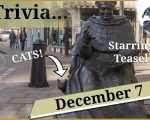
In today’s Advent treat, I’m sharing a Teasel’s Tudor Trivia video about a tradition today that goes back to Cardinal Wolsey’s time, in the reign of King Henry VIII, and which concerns cats.
[Read More...]
In today’s Advent treat, I’m sharing a Teasel’s Tudor Trivia video about a tradition today that goes back to Cardinal Wolsey’s time, in the reign of King Henry VIII, and which concerns cats.
[Read More...]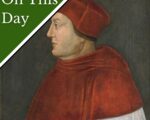
On this day in Tudor history, 15th September 1514, in the reign of King Henry VIII, Thomas Wolsey was appointed Archbishop of York. He had already been appointed Bishop of Lincoln in February of that year.
The previous Archbishop of York, Cardinal Christopher Bainbridge, had died in Rome on 14th July 1514 and Wolsey had been elected to the vacant office a few weeks later.
[Read More...]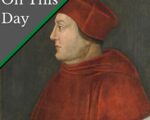
On this day in Tudor history, 3rd October 1518, King Henry VIII’s Lord Chancellor, Cardinal Thomas Wolsey, sang a mass to the king and the French ambassadors at St Paul’s Cathedral.
Wolsey was celebrating a treaty that had been made between England and France.
The celebrations also included a banquet and a lavish masque of lords and ladies dressed beautifully and disguised with masking hoods. Among those disguised were some well-known courtiers, people like Sir Francis Bryan and Bessie Blount, Henry VIII’s mistress.
[Read More...]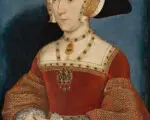
On this day in Tudor history, 3rd October 1536, imperial ambassador Eustace Chapuys wrote to Emperor Charles V informing him that Jane Seymour’s coronation was being postponed.
Several dates for Henry VIII’s third wife’s coronation are mentioned in the contemporary sources, but they all passed by without the coronation taking place, and building work on Westminster Palace in preparation for the coronation came to a halt.
Why wasn’t Jane Seymour crowned when her predecessor, Anne Boleyn, had been given a lavish coronation?
Find out more about what happened in 1536 and 1537…
[Read More...]
Thank you to Emilie and Nathaniel the dog for asking these excellent questions on Wolf Hall, and the relationship of Cardinal Thomas Wolsey and his servant, Thomas Cromwell.
Were the two men as close as they were shown in Wolf Hall?
How did Cromwell feel about Wolsey’s fall?
I answer these questions and also explain the history behind a scene in Hilary Mantel’s second novel in the series, Bring Up the Bodies, in which Cromwell vows revenge on those involved in Wolsey’s fall and in mocking him.
[Read More...]
On this day in Tudor history, 30th August 1525, the Treaty of the More was agreed between King Henry VIII of England and Louise of Savoy, who was acting as regent for her son, King Francis I of France, while he was imprisoned by imperial forces.
Why was Francis in prison? What were the terms of the Treaty of the More? How did this treaty affect Henry VIII’s daughter, Mary? And what happened next.
Find out all about the Treaty of the More and its consequences in today’s talk.
[Read More...]
On this day in Tudor history, 29th November 1530, at around 8 o’clock in the morning, Cardinal Thomas Wolsey, Henry VIII’s former Lord Chancellor, died at the Abbey of St Mary de Pratis, Leicester.
Cardinal Wolsey, who was in his fifties, cheated the executioner by dying a natural death while on his way to London to answer charges of treason. He surely would have been tried and executed had he reached the capital.
Find out about Cardinal Wolsey’s death, and who ended up being buried in the sarcophagus he’d had commissioned, in today’s talk.
[Read More...]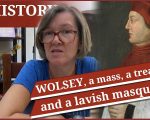
On this day in Tudor history, 3rd October 1518, Cardinal Thomas Wolsey, Henry VIII’s Lord Chancellor, sang a mass to Henry VIII and the French ambassadors at St Paul’s Cathedral in celebration of a treaty between England and France.
This mass wasn’t the only celebration, there was also a banquet and a lavish masque of lords and ladies dressed beautifully and disguised with masking hoods. And the masque included some well-known courtiers, people like Sir Francis Bryan and Bessie Blount, the King’s mistress.
Hear a contemporary description of this masque in today’s talk…
[Read More...]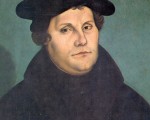
On this day in Tudor history, 12th May 1521, reformer Martin Luther was proclaimed a heretic by Bishop John Fisher and Cardinal Thomas Wolsey at St Paul’s in London, and his works were burned.
Hear a contemporary account of what happened on this day in 1521 in today’s video:
[Read More...]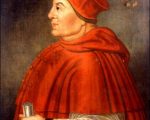
As today is the anniversary of Cardinal Thomas Wolsey’s death on 29th November 1530, I thought today’s “Throwback Thursday” treat could be Conor Byrne’s article on the life of Wolsey…
Thomas Wolsey was born between 1470 and 1473 in Ipswich, Suffolk. He was the son of Robert and Joan Wolsey. Robert owned a tavern in the parish of St. Mary at the Elms in Ipswich. Traditionally, Wolsey’s father has been identified as a butcher and cattle dealer. Thomas Wolsey’s humble origins proved a source of mirth to his critics during his long career. During his childhood and adolescence, Wolsey attended school in Ipswich and later studied at Magdalen College, Oxford, graduating with BA in 1486 when he was about fifteen years old. A decade later, he was ordained as a priest in the parish church of St. Peter in Marlborough. The year before, he graduated with MA. For a short period, Wolsey served as master of Magdalen School and, later, as dean of divinity.
[Read More...]
Thomas Wolsey was born between 1470 and 1473 in Ipswich, Suffolk. He was the son of Robert and Joan Wolsey. Robert owned a tavern in the parish of St. Mary at the Elms in Ipswich. Traditionally, Wolsey’s father has been identified as a butcher and cattle dealer. Thomas Wolsey’s humble origins proved a source of mirth to his critics during his long career. During his childhood and adolescence, Wolsey attended school in Ipswich and later studied at Magdalen College, Oxford, graduating with BA in 1486 when he was about fifteen years old. A decade later, he was ordained as a priest in the parish church of St. Peter in Marlborough. The year before, he graduated with MA. For a short period, Wolsey served as master of Magdalen School and, later, as dean of divinity.
[Read More...]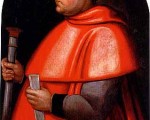
On this day in history, 3rd October 1518, Cardinal Wolsey sang a mass to Henry VIII and the French ambassadors at St Paul’s Cathedral in celebration of the treaty agreed between the two countries the previous day, the Treaty of London or Treaty of Universal Peace. The King and ambassadors also took oaths to the treaty.
In the evening, there was a sumptuous banquet followed by a mummery featuring the King and his sister, Mary. Jousting and pageants were also part of the celebrations of this treaty.
[Read More...]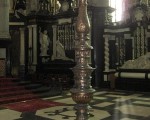
Cardinal Thomas Wolsey was patron to the Florentine scuptor Benedetto da Rovezzano (1474-1552) and commissioned him to make a lavish Renaissance style tomb for him. The project comprised a beautiful black marble sarcophagus and four bronze angels, each measuring around a metre in height, which are now known as Wolsey’s Angels.
[Read More...]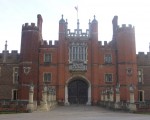
Hampton Court has origins far older than Henry VIII. Originally Hampton Court was a settlement belonging to the Saxon period; its original name was ‘Hammton’ meaning ‘a settlement by the river’. In the early 12th century the land was owned by Reginald de St Valery, a crusader in Jerusalem. He allowed the Knights Hospitallers of St John to rent the land. The Knights built the House of Hampton and the land was primarily used to manage the Knights agricultural estates.
[Read More...]